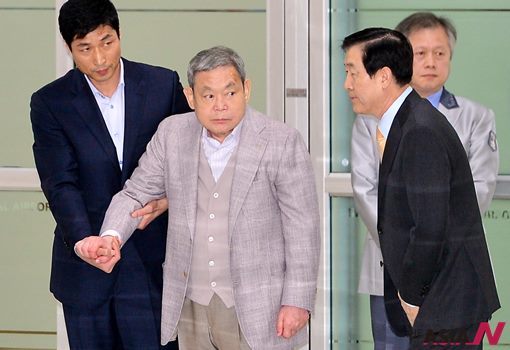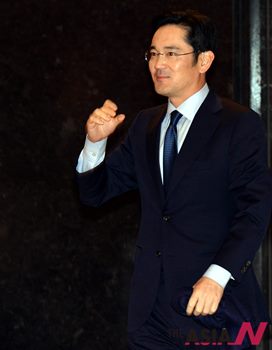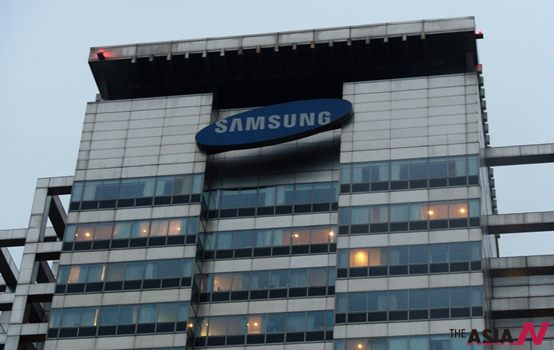
Samsung, after Lee Kun-hee’s heart attack?

This event may precipitate the succession plan at Samsung
After Lee Kun-hee’s sudden heart attack over the weekend, emerged the issue of succession plan at the Samsung business group again. It has become a matter of grave concern how Samsung’s succession plan will evolve. While business watchers guess that the succession plan will be precipitated by this event, many are keenly interested in how the developments will fan out.
It occurred suddenly on late Saturday night. Samsung Electronics Chairman Lee Kun-hee received cardiopulmonary resuscitation (CPR) in a Seoul hospital after suffering from an abrupt heart attack.
The 73-year-old business tycoon then underwent an angioplasty procedure to reopen narrowed arteries, but after that his condition became stable, company officials told reporters on Sunday.
“Emergency measures were properly performed, and his health isn’t in a critical situation,” said a senior Samsung executive.
Samsung Medical Center (SMC), where Lee was treated, said Lee has recovered in a “VIP room” at the center’s main building, declining to comment on whether he was in an intensive care room.

Lee Jae-yong interrupted trip to US
Vice Chairman Lee Jae-yong, the chairman’s only son and heir-apparent interrupted his trip to the United States and rushed back to Seoul to see his father.
According to company officials, Lee was admitted to Soonchunhyang University Hospital near his residence in Hannam-dong at around 10:55 p.m., Saturday. It may mean that the situation was so severe that he was not moved to SMC, one arm of the Samsung group.
He had difficulty in breathing, which doctors attributed to the narrowed arteries in his heart. Then, his heart stopped, prompting the medical team to resuscitate him.
He then was moved to SMC, a Samsung subsidiary in southern Seoul at around 12:15 a.m. The doctors inserted stents to help Lee’s heart function properly, in which tubes were inserted into his body to widen blood vessels to prevent a heart attack. An SMC spokesman, however, said that the chairman didn’t have any heart surgery.

Samsung in an emergency mode
Samsung has entered into an emergency mode, and all top Samsung executives, including its corporate strategy office head Choi Gee-sung, visited the hospital to see Lee.
“Choi and other senior executives were briefed with the latest updates on the chairman’s condition and discussed what next steps to take,” said company officials.
Lee has a history of being hospitalized several times. In 2000, Lee was diagnosed with lung cancer and had surgery. And he was hospitalized for some 10 days in August in 2013 at the center due to a case of pneumonia. This raised concerns about his health. In his public appearances, Lee is either helped by his aides or moves in a wheelchair.
Lee’s health problem stumbling block to power transfer?
It seems that the health problem of Lee Kun-hee has emerged as a major stumbling block to the group’s smooth move to realign businesses for organizational reform and power transfer. Although the group claims that Lee is now recovering, concerns are still lingering considering his medical history and old age, which is 73.
Market insiders think that his worsening health and old age are expected to speed up the ownership transfer of the conglomerate from the chairman to his three children. This would bring more new changes at the group, they said.
But it is uncertain whether the move will go smoothly as the power transfer is still in its initial stages and Lee still makes key management decisions and presents the business vision for the entire group.
Earlier this year, the chairman stressed the conglomerate needs to move beyond market and technological limits as it is being challenged by the rise of international rivals in key business areas such as smartphones.
Recent reshuffle for ‘Mach’ management strategy
Last month, in line with his remarks, the group conducted a major reshuffle in an effort to increase efficiency based on the so-called “Mach” management strategy. The Mach strategy was first initiated by the chairman almost a decade ago to emphasize the importance of speed in business management.
Recently, the group replaced six of seven executives at its future strategy office ― which plays a central role in charting out business strategies and coordinating the interests of group affiliates.
Last week, Samsung SDS announced that it will go public this year, which the group claimed is in line with its efforts to tap into overseas markets to move beyond the saturated domestic IT services market. But market insiders think this is part of the group’s restructuring and top management succession.

Lee’s three children deeply involved in management
Lee’s three children ― Samsung Electronics vice chairman Lee Jae-yong, Hotel Shilla President Lee Bu-jin, and Samsung Everland fashion division president Lee Seo-hyun ― are expected to secure more than 2 trillion won from the IPO.
How they spend this amount of money will be critical to decide the direction and speed of the power transfer at Samsung. “The recent mergers among affiliates are seen as part of the generational ownership transfer within the group,” an expert in a global consulting firm commented.
Currently Lee’s three children — Lee Jae-yong, Lee’s daughters Lee Boo-jin and Lee Seo-hyun — are heavily involved in the management of Samsung affiliates in what is widely seen as a three-way divide of the group as part of his succession plan.


